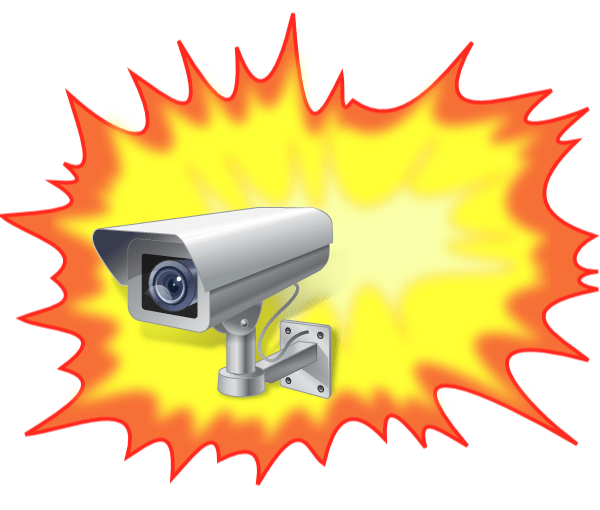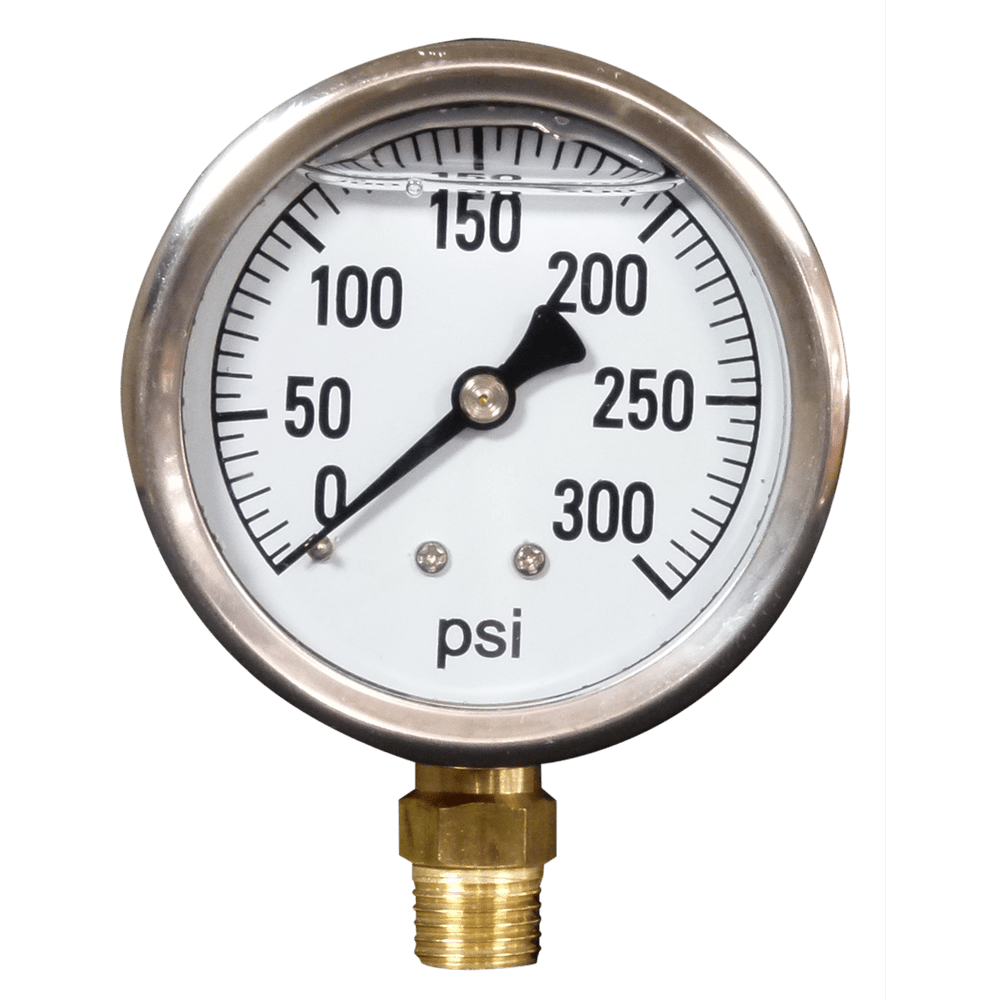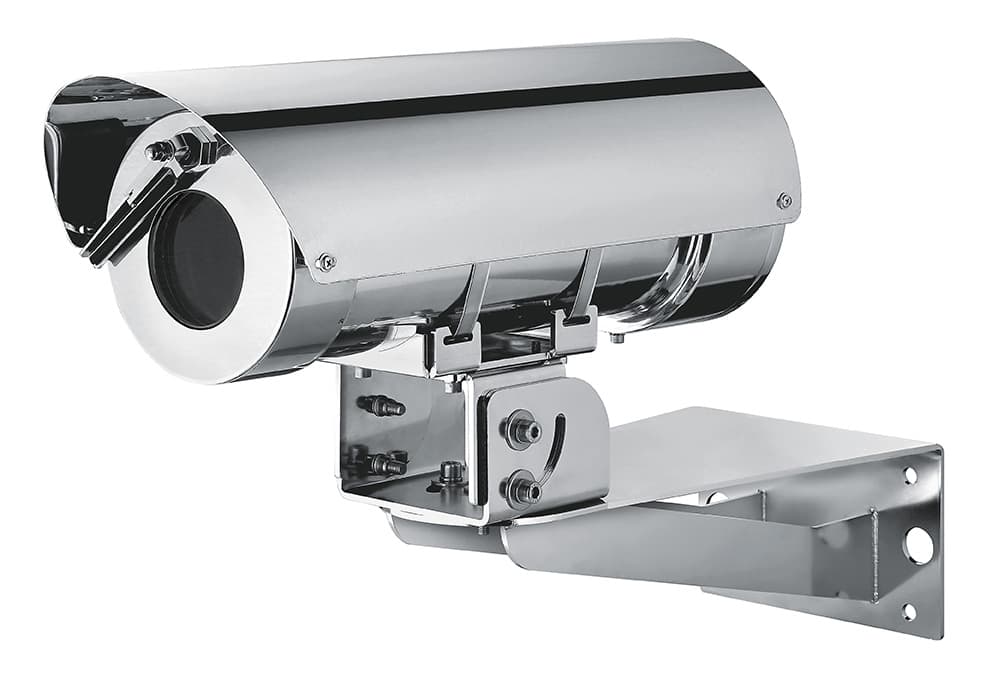
An explosion-proof camera includes a special enclosure. The camera and enclosure can be used in a hazardous potentially explosive environment. This means that the camera system will not cause an explosion, rather than survive an explosion outside the enclosure.
The camera and enclosure used in these environments are designed to prevent ignition of the surrounding gases or dust. They will either contain any explosion within the device or prevent sparks exiting the device and triggering an explosion.
Normally, we don’t worry about sparks. For example, a household light switch may emit a small, harmless visible spark when switching. In an ordinary atmosphere, this arc is of no concern, but if a flammable vapor is present, the arc might cause an explosion. Explosive environments can be found in a number of places such as oil and gas tankers, chemical processing plants, hospital operating theaters, aircraft refueling, and hangers, coal mines or oil refineries, sewage treatment plants, grain handling, sugar refineries, and printing industry. These environments can contain flammable gases such as acetone, propane, methane, hydrogen, or coal dust.
Specifications for Explosion Proof Equipment

To be considered explosive proof the equipment must meet the standards defined by ATEX or IECEx. IECEx is an international standard, while the ATEX directive was created to protect workers from explosive risks and provide common standards for equipment traded within the EU. These related standards define the type of environment and the protection level provided by the equipment. UL in the United States has also provided designations for various hazardous locations.
The standards apply to all types of equipment, but this article discusses explosive proof surveillance IP cameras.
In general, the camera and enclosure prevent ignition (or sparks) from igniting the gas or dust in the environment. This can be done in two ways, the housing can be strong enough to prevent an internal explosion from getting outside the enclosure, or it can contain inert gases that prevent the explosive gases from entering the enclosure, and causing an internal explosion.
The specifications define certain types of environments, such as areas where combustible gases are present all the time, some of the time, or where it is unlikely to be there at all. The specifications also describe the type of combustible material that can be present. Different materials are defined by how easily an explosion can be triggered and how much energy is released by the explosion. For example, acetylene and hydrogen have a low flash-point, so they are very likely to explode and cause damage.
Pressurized Enclosures

Standards for pressurized enclosures are provided by the International Society of Automation (ISA). This is a non-profit technical group that provides guidelines and recommendations for the design, construction, testing, and labeling of electrical apparatus. ISA-12.04.01 (IEC 60079-2 Mod) is the ISA standard relating to pressurized enclosures for electrical apparatus used in explosive gas atmospheres.
It provides the requirements for the design, construction, testing and marking of electrical apparatus for use in potentially explosive atmospheres. Specifically, the standard deals with camera enclosures that use a protective gas maintained at a pressure above that of the external atmosphere. This is used to guard against the formation of an explosive gas atmosphere within enclosures.
The pressurized inert gas prevents any flammable gases or dust from entering the enclosure so that even if there’s a spark it won’t cause an explosion. This standard includes requirements for the apparatus and its associated equipment including the inlet and exhaust ducts, and also for the auxiliary control apparatus necessary to ensure that pressurization and/or dilution is established and maintained.
The inert gases suggested by the standard include nitrogen, carbon dioxide, argon, or any gas which can reduce the hazard of explosion.
The recommendations include controlling the maximum internal pressure, providing enough pressure to keep out any flammable gases and dust. It also discusses how to prevent the enclosure from becoming too hot, and assuring that all the gaskets and connections are sealed and can operate in the pressurized enclosure.
Explosion Proof Camera Systems

Explosion-proof camera systems are available from a number of specialized manufacturers such as Pelco, and Videotec. It is not easy to manufacture explosion-proof camera systems. The difficulty includes testing and meeting the certifications from IECex and ATEX.
There are a number of other manufacturers that offer explosion-proof camera systems, but some of these don’t comply with the certifications.
An explosion-proof camera consists of the special explosion-proof enclosure and the camera. Almost any IP camera can be used inside the special enclosure.
If you need help selecting the right explosion-proof cameras or enclosures, please contact us. We can be reached at 800-431-1658 in the USA, or at 914-944-3425 everywhere else, or just use our contact form.